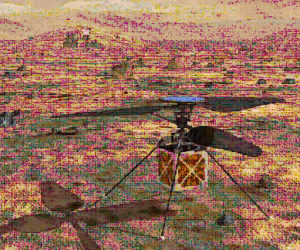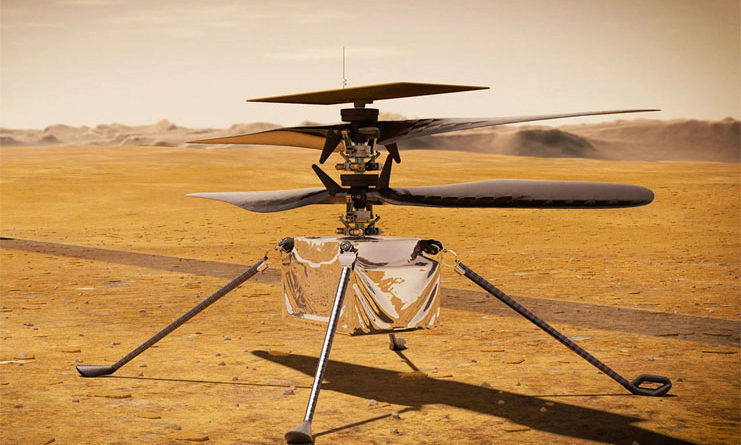Mars Helicopter Ingenuity Could Usher In New Era Of Exploration
Washington DC (UPI) Mar 22, 2021
The Mars helicopter, Ingenuity, will be dropped from the Perseverance rover soon, but NASA hasn’t determined the exact date. The rover ejected a shield that covered the helicopter over the weekend.NASA’s plan to fly a helicopter on Mars for the first time in a few weeks could start a new era of interplanetary exploration like the space agency’s little Sojourner rover did in the 1990s, according to several experts.

Ingenuity is purely a demonstration like Sojourner was, but it will provide images of the surface around the Perseverance rover.
Depending on its success, NASA may be able to use helicopters to explore Mars faster, said Robert Zubrin, founder and president of the non-profit Mars Society, which advocates for Martian exploration.
“Rovers are great, but they’re slow,” Zubrin told UPI. “A rover might go 600 feet in a day, but a helicopter could fly 600 feet in a few minutes and possibly more than 100 miles in a day at some point.”
Zubrin said Ingenuity is one of the most exciting elements of the Perseverance rover, which landed on Mars on Feb. 18. The rover and the helicopter made the 300 million-mile journey after being launched from Florida in July.
Zubrin said he and the society’s 5,000 members eagerly anticipate seeing Ingenuity fly. The little helicopter weighs only 4 pounds, but has dual solar-powered rotors 4 feet in diameter to lift it in the thin Martian air.
“We would use helicopters as drones for reconnaissance for human explorers in the future,” he said. “We could even use a combination of helicopters and robots to help set up human habitats on Mars before people arrive.
“Ultimately, it’s conceivable that astronauts could travel around Mars in helicopters — but they’d have to be much bigger and more powerful.”
Mars has a surface area equivalent to Earth’s continents, so more efficient means to explore it are important, said Ray Arvidson, professor of Earth and planetary sciences at Washington University in St. Louis. He has been involved in every Mars mission since Viking landed on Mars in 1976.
“If the helicopter experiment is a success, it opens up new avenues for exploring the planet, with very detailed reconnaissance from an airborne platform complementing rovers on the ground,” Arvidson said.
Such aerial views will allow more efficient characterization of Mars’ “rich and complicated geologic history,” he said.
It remains to be seen if Ingenuity will provide images of the terrain that could help guide Perseverance through Jezero Crater, where it landed, said Kirsten Siebach, assistant professor of planetary geology at Rice University in Houston.
Such help for the rover isn’t a goal for the helicopter, but it could happen, she said.
Even on Earth, geologists often use flying drones to scout difficult terrains like canyons, cliffs or volcanoes, she said.
“If you can’t quite see a rock, or you can see it off in the distance, you can fly a drone there to help you figure out if it’s worth going there,” Seibach said. “Future rovers may be paired with drones to aid navigation.”
She noted that Perseverance’s main goal is to find rocks that provide evidence of past life on Mars. The rover will drill rock samples that NASA intends to retrieve and send back to Earth on future missions.
Siebach hopes to examine those samples one day.
“A success with Ingenuity would just open up the possibilities for the next generation of spacecraft to provide a new angle on Mars that we’ve never seen before,” she said.
Courtesy: MarsDaily

